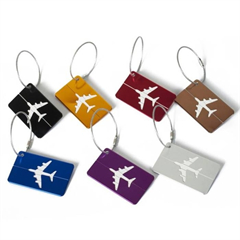Metal labels are typically made from various types of metals or metal alloys. The choice of metal depends on factors such as the desired appearance, durability, functionality, and cost. Here are some common materials used for making metal labels:
- Stainless Steel: Stainless steel is a popular choice for metal labels due to its durability, corrosion resistance, and modern look. It comes in different finishes, such as brushed, polished, or matte, and can be etched, engraved, or stamped for customization.
- Aluminum: Aluminum is lightweight and can be anodized or coated with various finishes to achieve different colors and textures. It’s commonly used for labels that need to be both durable and lightweight, such as on machinery or electronics.
- Brass: Brass is an alloy of copper and zinc, known for its classic and elegant appearance. It can be polished to a high sheen or left to develop a natural patina over time.
- Zinc Alloy: Zinc alloys, such as zamak, are versatile and can be molded into intricate designs. They are often used for labels that require a three-dimensional or sculptural appearance.
- Copper: Copper has a warm and distinctive look. It can be left untreated to develop a natural patina or coated to maintain its shine.
- Bronze: Bronze is another copper alloy that offers a unique reddish-brown color. It’s often used for labels requiring a vintage or rustic aesthetic.
- Nickel-Silver: Nickel-silver, also known as German silver, is an alloy of copper, zinc, and nickel. It has a silvery appearance and is often used for items like jewelry and decorative labels.
- Pewter: Pewter is a soft metal alloy that is easy to work with and can be molded into intricate designs. It’s commonly used for decorative and artistic labels.
- Tin: Tin is a lightweight and cost-effective material that can be used for labels where a shiny appearance is desired.
Metal labels can be customized using various processes, including:
- Engraving: Carving designs into the metal surface.
- Etching: Using chemicals to create designs or text on the metal.
- Stamping: Pressing designs into the metal using dies.
- Embossing/Debossing: Creating raised or recessed designs on the metal surface.
- Painting/Coating: Applying paints or coatings for color and protection.
- Anodizing: Creating a protective oxide layer on aluminum for color and durability.
Metal labels are often used for branding, product identification, and decorative purposes in industries ranging from fashion and accessories to industrial equipment and electronics. The choice of metal and customization process depends on the desired outcome and the intended application of the label.

